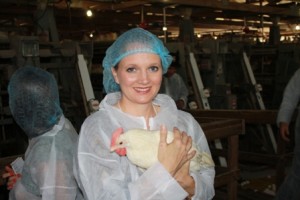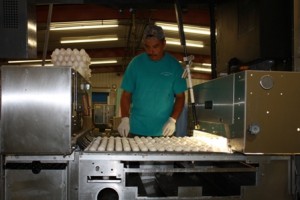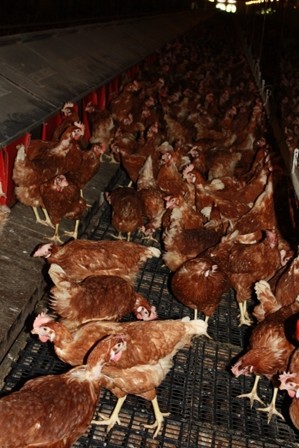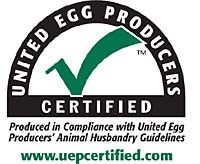
I love field trips. Whenever my kids’ school sends home a permission slip for something fun and interesting, I’m there. I ride the bus, bouncing along with other parents, enjoying an excuse to break out of my normal routine and learn something new.
Still, it came as a surprise when I recently got invited to attend an educational field trip — just for me. I was somehow selected to join a group of media attending a conference hosted by the United Egg Producers, held in sunny Tampa, Florida.
I’m not sure why they chose me — perhaps a secret computer at my local grocery store alerted them to the fact that THIS WOMAN BUYS A LOT OF EGGS. It’s true. We eat eggs every day at our house — fried, boiled, or scrambled for breakfast; deviled and sliced for after-school snacks; and baked in all sorts of muffins, cookies, pancakes, waffles, and cornbread.
Eggs fill my kids up and give them energy. They’re also an inexpensive source of protein. Yet I hadn’t given much thought as to WHY eggs are so abundant in the U.S., as well as why I can buy them so cheaply.
We tried for several years to maintain our own free-range, organic egg-laying hens. But eventually we lost every single one of them to predators — neighborhood dogs, hawks, and weasels. In a way it was a relief. Chickens don’t lay forever, and once they age out, you either keep them as feathery pets or … you know, eat them. Which I couldn’t imagine doing.
So I went to Tampa, curious about how modern egg farmers operate. I went alone — with an open mind, a camera, and a little black notebook.
Our group was eclectic: I met other mom bloggers, healthy living writers, cooking experts, and even a senior beauty editor from New York. Everyone was super friendly, and I blended right in, trying to act like I do this sort of thing all the time.
We rode on a bus, actually a van, out to a modern egg-producing farm. Along the way, we listened to speakers and watched a video about how hens create and lay their eggs. Amazing stuff! When we arrived, our van had to be hosed down, and each of us suited up from head to toe in biosecurity jumpsuits. This is why school groups usually aren’t invited to tour egg farms — absolutely everything must be 100% sanitary, free of pathogens.
Here’s our little group, trying to get used to our new outfits (I am on the far right):

And here I am holding one of these hard-working beautiful white leghorn hens:

I cannot begin to describe to you all the emotions that raced through my body as I entered a barn housing over 100,000 chickens. Mostly, I felt gratitude. I realized I’ve never fully appreciated the labor behind each and every egg I bring into my home.
We learned that this facility packages 750,000 eggs per day. It brought back memories of watching “Mr. Rogers” with my children, as I wanted to ask each person working there a million questions. It was fascinating to watch the eggs going from hens to egg cartons within a matter of minutes.

Next, we visited a cage-free farm. Here the hens can roam around freely.

This breed of bird is more docile than the white leghorn, and lays beautiful brown eggs.

After our busy morning of visiting farms, we spent the afternoon listening to professors and other health experts explain the scientific research behind modern egg farming. I learned that the United Egg Producers have created welfare guidelines to ensure that hens have “adequate space, nutritious food, clean water, proper lighting, and fresh air daily.” It’s a voluntary program, and only farms that adhere to these strict guidelines can display the UEP logo on their packaging:

So, after listening to all of these well-informed people and seeing for myself what modern egg farms look like, I came away with one main thought: as consumers, we have plenty of choices when it comes to eggs.
We can buy the inexpensive white eggs that come from caged hens, or we can buy the pricier cage-free eggs. We can buy from local organic farms, or we can fill up our carts at the supermarket. If we have the time, space, and inclination, we can raise our own chickens to feed our families. I encourage you to research all of this for yourself. You can take a virtual tour of a UEP-certified egg farm here.
My special thanks to the United Egg Producers for hosting me on this tour. I learned a lot, made new friends, and gained a greater appreciation of the network of farms and people who work to bring food into my home.
This is definitely a mom’s field trip I’ll never forget.

















